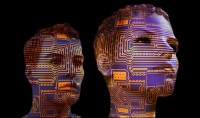AI Pioneers Are Honored with the Prestigious Turing Award
March 29, 2019
The Association for Computing Machinery (ACM) honored three artificial intelligence pioneers with the prestigious Turing Award for their work on neural networks. The Turing Award, often dubbed the Nobel Prize of computing, was launched in 1966 and includes a $1 million prize that the three honorees will share. Doctors Geoffrey Hinton, Yann LeCun and Yoshua Bengio helped lay the foundation for the evolution of technologies including facial recognition, digital assistants and self-driving vehicles.
The New York Times reports that Hinton, a former University of Toronto professor now at Google; LeCun, a former New York University professor now at Facebook; and Bengio, a University of Montreal professor working with IBM and Microsoft, all played a significant role in developing neural networks.

“What we have seen is nothing short of a paradigm shift in the science,” said Allen Institute for Artificial Intelligence chief executive Oren Etzioni, “History turned their way, and I am in awe.” Neural networks are “loosely modeled on the web of neurons in the human brain,” and as “a complex mathematical system … can learn discrete tasks by analyzing vast amounts of data.”
The significance is that it allows “many artificial intelligence technologies to progress at a rate that was not possible in the past … [since] rather than coding behavior into systems by hand — one logical rule at a time — computer scientists can build technology that learns behavior largely on its own.” LeCun spent a year doing postdoctoral research with Hinton, and then moved to AT&T’s Bell Labs in New Jersey, “where he designed a neural network that could read handwritten letters and numbers.” That system, via an AT&T subsidiary, was sold to banks, ultimately reading “about 10 percent of all checks written in the United States.”
But LeCun noted, “[It] worked well only when you had lots of training data, and there were few areas that had lots of training data.” In 2004, with “less than $400,000 in funding from the Canadian Institute for Advanced Research,” Hinton began to focus on “neural computation and adaptive perception,” asking Bengio and LeCun to join him. In 2010, Hinton “and his students helped Microsoft, IBM, and Google push the boundaries of speech recognition” and then created breakthroughs in image recognition based on an algorithm developed by LeCun.
Meanwhile, Bengio’s research “helped drive the progress of systems that aim to understand natural language and technology that can generate fake photos that are indistinguishable from the real thing.” All three continue to push towards “true intelligence.” “We need fundamental additions to this toolbox we have created to reach machines that operate at the level of true human understanding,” said Bengio.

No Comments Yet
You can be the first to comment!
Sorry, comments for this entry are closed at this time.